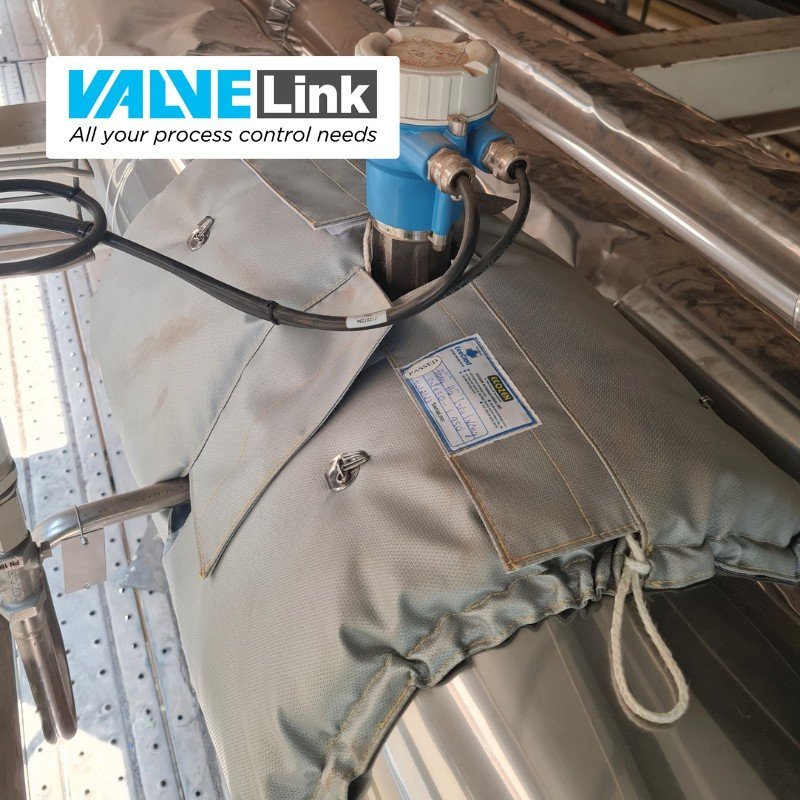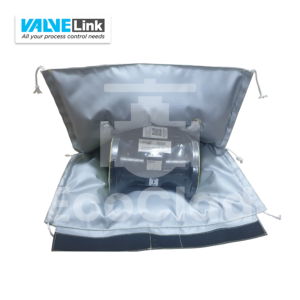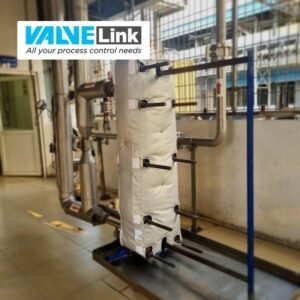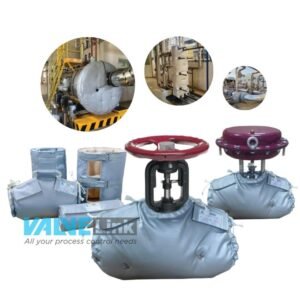In any steam system, the steam meter serves as an essential measuring instrument, providing critical data for process control, performance monitoring, and cost optimization. However, they can be overlooked when it comes to insulation. Although the device is selected to operate within a specific temperature range, operating temperatures exceeding the allowable limits—however rare due to system or external environmental impacts—can directly affect the accuracy of the measurement results.
The lack of insulation not only leads to significant heat loss, wasting energy, but also poses a burn risk to operators. Therefore, properly insulating steam meters is essential for maintaining accuracy, optimizing performance, and ensuring workplace safety.
Challenges in Insulating Steam Meters
Insulating a steam meter is not as simple as wrapping an insulation layer; it involves facing very specific technical requirements:
- Significant Heat Loss: In an industrial environment, heat loss is a persistent problem, especially at points with complex shapes and structures like valves, flanges, and meters. At these locations, applying traditional insulation materials is often limited by installation difficulties, leading to gaps and openings that cause significant heat loss. These are the energy-wasting “hot spots” that directly impact the system’s operational efficiency and production costs.
- Impact on Accuracy: The accuracy of many types of steam meters (especially differential pressure or vortex types) is very sensitive to changes in steam parameters like density, which is affected by temperature. An unstable ambient temperature affecting the meter body can lead to measurement errors.
- Non-Uniform Structure: A steam meter assembly includes the main body, flanges, connecting pipes, and sometimes a transmitter. This complex shape makes it impossible for traditional insulation materials to provide a complete seal, creating points of heat loss.
- Requirement for Observation and Calibration: The meter’s parameter display needs to be observed regularly. Furthermore, the device must be easily accessible for periodic calibration. Fixed insulation layers create a major obstacle for both of these tasks.
The Optimal Solution: Custom-Fitted Insulation Jackets
Our custom-fitted insulation jacket solution is engineered to completely overcome the above challenges, offering dual benefits, both technical and economic:
- Reduces heat loss by up to 90% compared to having no insulation, enhancing energy efficiency to optimize operating costs and contribute to emissions reduction.
- Snug-Fit Design for a Stable Measurement Environment: The jacket is designed to fit snugly around the entire meter, from the body to the flanges, creating a stable environment around the device. As a result, measurement data remains accurate and reliable, unaffected by external temperatures.
- Smart Design with No Impact on the Display: The section covering the meter’s display is designed with an open window or a layer of clear, heat-resistant material. This design allows operators to easily read the parameters at any time without having to remove the jacket.
- Comprehensive Protection, Increased Equipment Lifespan: The jacket not only retains heat but also protects the device from dust, moisture, impacts, and corrosive elements, thereby helping to extend the meter’s lifespan.
- Flexible Removable Design, Ready for Calibration: With a specialized system of straps and buckles, removing the jacket to calibrate or inspect the meter takes only a few minutes. Afterward, the jacket can be quickly reinstalled with the same perfect fit, without compromising its insulation effectiveness.
- Operational Safety and Work Environment: The jacket fully encloses the equipment, completely isolating hot surfaces to create a safe work environment and minimize the risk of burns or accidents for personnel during operations.
Investing in insulation jackets for steam meters is not just an energy-saving solution; it’s an investment in data accuracy, process stability, and human safety.
What type of steam meter is in your system (vortex, ultrasonic, differential pressure, etc.)? Let us know so we can advise on the most optimal insulation jacket design.





